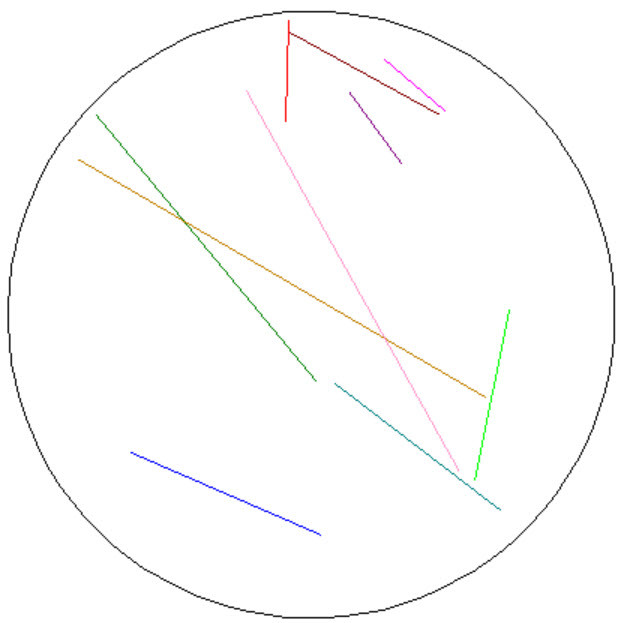Here we look at the average distance between two points inside the unit circle. The following is a picture of 10 line segments whose endpoints are randomly chosen inside the unit circle.
Here are the results of ![]() trials, repeated
trials, repeated ![]() times:
times:
![]()
Pick ![]() and
and ![]() at random in the intervals
at random in the intervals ![]() and
and ![]() . The points
. The points ![]() tend to be bunched at the center, whereas the points
tend to be bunched at the center, whereas the points ![]() are uniformly distributed within the unit disk.
are uniformly distributed within the unit disk.
Note that the area inside the circle ![]() is exactly half the area of the unit circle since
is exactly half the area of the unit circle since
![]()
In a similar manner, the area inside the circle ![]() has area
has area
![]()
and hence the ratio of its area to the unit circle is exactly ![]() .
.
Without loss of generality, pick one point ![]() on the positive
on the positive ![]() -axis and a second point
-axis and a second point ![]() uniformly within the unit disk. The distance between these two points is
uniformly within the unit disk. The distance between these two points is

The average distance between two points is given by
![Rendered by QuickLaTeX.com \[\frac{\int_{0}^{1}\int_{0}^{1}\int_{0}^{2\pi }\sqrt{s+r-2\sqrt{r}\sqrt{s} \cos \theta }\,dr\,ds\,d\theta }{\int_{0}^{1}\int_{0}^{1}\int_{0}^{2\pi } \,dr \,ds \,d\theta } = \frac{128}{45\pi }\approx 0.905\,414\,787\, 4\]](https://darelhardy.com/wp-content/ql-cache/quicklatex.com-c68194ed996759483f3d852dbe647b5b_l3.png)

